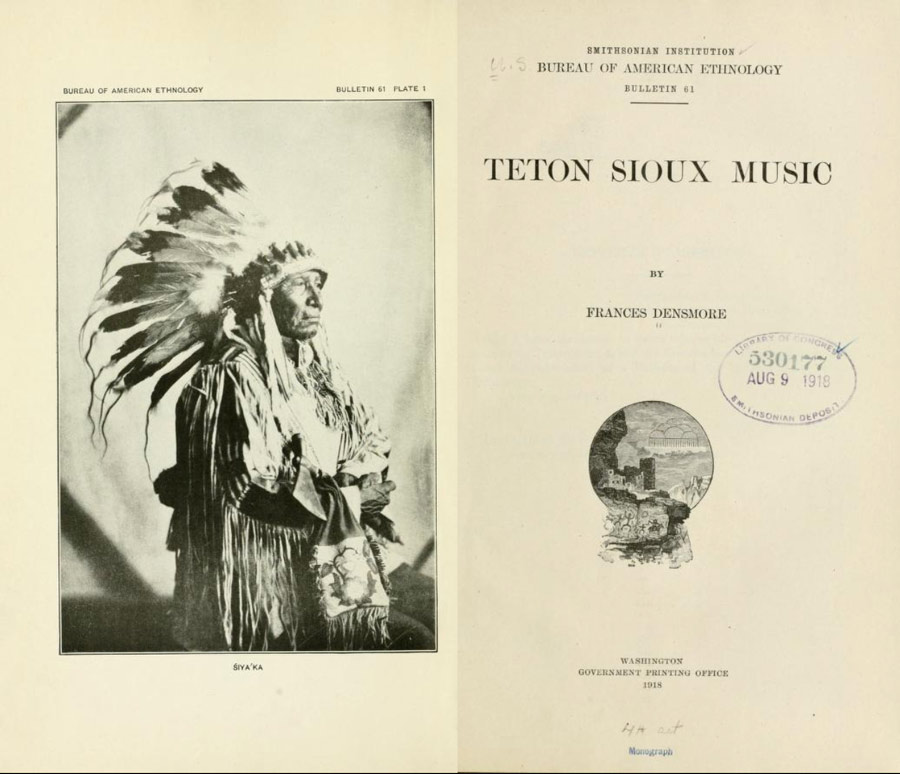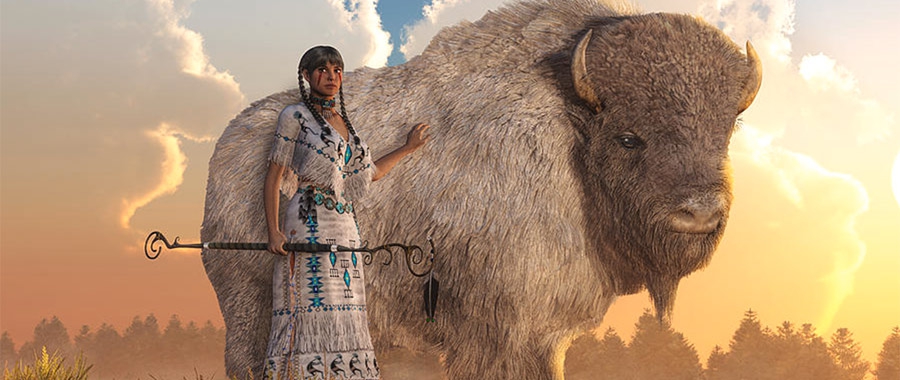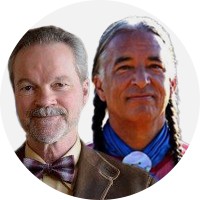The views expressed in our content reflect individual perspectives and do not represent the authoritative views of the Baha'i Faith.
The Lakota Prophet and Messenger of God, White Buffalo Calf Woman, like all the Creator’s Messengers, brought spiritual and moral teachings to her people.
Those profound teachings, largely unknown outside of Lakota indigenous culture until fairly recently, have enormous resonance, commonality and concord with the spiritual traditions of other Faiths and belief systems. As the Baha’i teachings affirm, the moral and spiritual principles of all great religions have a single underlying foundation:
Let us strive with all our powers to unite the East and West so that the nations of the world may be advanced and that all may live according to the one foundation of the religions of God. The essentials of the divine religion are one reality, indivisible and not multiple. It is one. – Abdu’l-Baha, The Promulgation of Universal Peace, p. 42.
With that unity in mind, Baha’i authors Christopher Buck and Kevin Locke recently talked extensively about the relationship between the Baha’i teachings and the indigenous Lakota spiritual teachings of White Buffalo Calf Woman. Their conversation continues here:
Q: In the narrative by the Lakota statesman, scholar and singer Lone Man (Lakota/Teton Sioux name: Iśna´ la-wića´)—recorded in 1911 (along with 18 songs, recorded on a wax cylinders) at the Standing Rock Reservation, Fort Yates, North Dakota—I have identified the following ten primary, positive ethical and moral teachings of White Buffalo Calf Woman:
- Possess “great respect and reverence toward sacred things.”
- Live as “belonging to one family.”
- Be “always very faithful to promises.”
- “Cease hostilities against other nations.”
- “Administer help to the sick.”
- “Comfort others in time of sorrow.”
- Show “kindness toward every living creature on earth.”
- “Remember the dead.”
- “Love your children dearly.”
- “Above all, lead pure lives.” – Frances Densmore, “Teton Sioux Music,” Bureau of American Ethnology Bulletin, Vol. 61 (1918): 1–561 [see pp. 65–66].
Kevin, I’d like to ask, did I get these right? There are more teachings, but these seemed to stand out in Lone Man’s narrative. If so, would you please comment on each of White Buffalo Calf Woman’s “Ten Commandments” (my term, if that’s okay)? Were you raised with these sacred values, morals and ethics?
 A: First of all, the book you cite, “Teton Sioux Music,” is the reason why the Baha’i Faith was established at Standing Rock! Audrey Reynolds—the first Baha’i who moved to Standing Rock—received a copy of “Teton Sioux Music” as a youth (I have that original copy), and noted that Frances Densmore’s informants hijacked the narrative by insisting that the account of White Buffalo Calf Woman’s appearance and teachings must come first, because they are foundational to everything—and that Lone Man would give the account. (Densmore explains this in the introduction, in fact.)
A: First of all, the book you cite, “Teton Sioux Music,” is the reason why the Baha’i Faith was established at Standing Rock! Audrey Reynolds—the first Baha’i who moved to Standing Rock—received a copy of “Teton Sioux Music” as a youth (I have that original copy), and noted that Frances Densmore’s informants hijacked the narrative by insisting that the account of White Buffalo Calf Woman’s appearance and teachings must come first, because they are foundational to everything—and that Lone Man would give the account. (Densmore explains this in the introduction, in fact.)
Audrey Reynolds was so moved by this account and the spiritual nature of all the narratives in “Teton Sioux Music” that it eventually led her to the Baha’i Faith, and she went directly from the first Baha’i World Congress in London in 1963 to Standing Rock! Her husband, Jonathan Reynolds, is still alive and can give many more details. The way in which “Teton Sioux Music” outlines and fleshes out so many of these Ten Commandments is amazing. The title you give here is ingenious and inspired!
Q: Thanks, Kevin. Here’s the way I understand it from a Baha’i perspective: every Faith gives essential moral and spiritual guidance to its followers, and to the civilizations of the time, as well. Each of the founders of those Faiths bring commandments, principles and laws that encourage humanity to love one another, to establish peace and respect the sacredness of life. The Baha’i teachings put it this way:
The divine Manifestations have been iconoclastic in Their teachings, uprooting error, destroying false religious beliefs and summoning mankind anew to the fundamental oneness of God. All of Them have, likewise, proclaimed the oneness of the world of humanity. The essential teaching of Moses was the law of Sinai, the Ten Commandments. Christ renewed and again revealed the commands of the one God and precepts of human action. In Muhammad, although the circle was wider, the intention of His teaching was likewise to uplift and unify humanity in the knowledge of the one God. In the Bab the circle was again very much enlarged, but the essential teaching was the same. The Books of Baha’u’llah number more than one hundred. Each one is an evident proof sufficient for mankind; each one from foundation to apex proclaims the essential unity of God and humanity, the love of God, the abolition of war and the divine standard of peace. Each one also inculcates divine morality, the manifestation of lordly graces— in every word a book of meanings. For the Word of God is collective wisdom, absolute knowledge and eternal truth. – Abdu’l-Baha, The Promulgation of Universal Peace, p. 154.
A: Yes, Chris, that collective wisdom reflects itself in every holy Faith, including the Lakota beliefs. So in the next essay in this series, let’s look at White Buffalo Calf Woman’s spiritual commandments, and see how they fit this Baha’i concept of the oneness of all religion.
Artwork by Daniel Eskridge.
















Comments
Sign in or create an account
Continue with Googleor